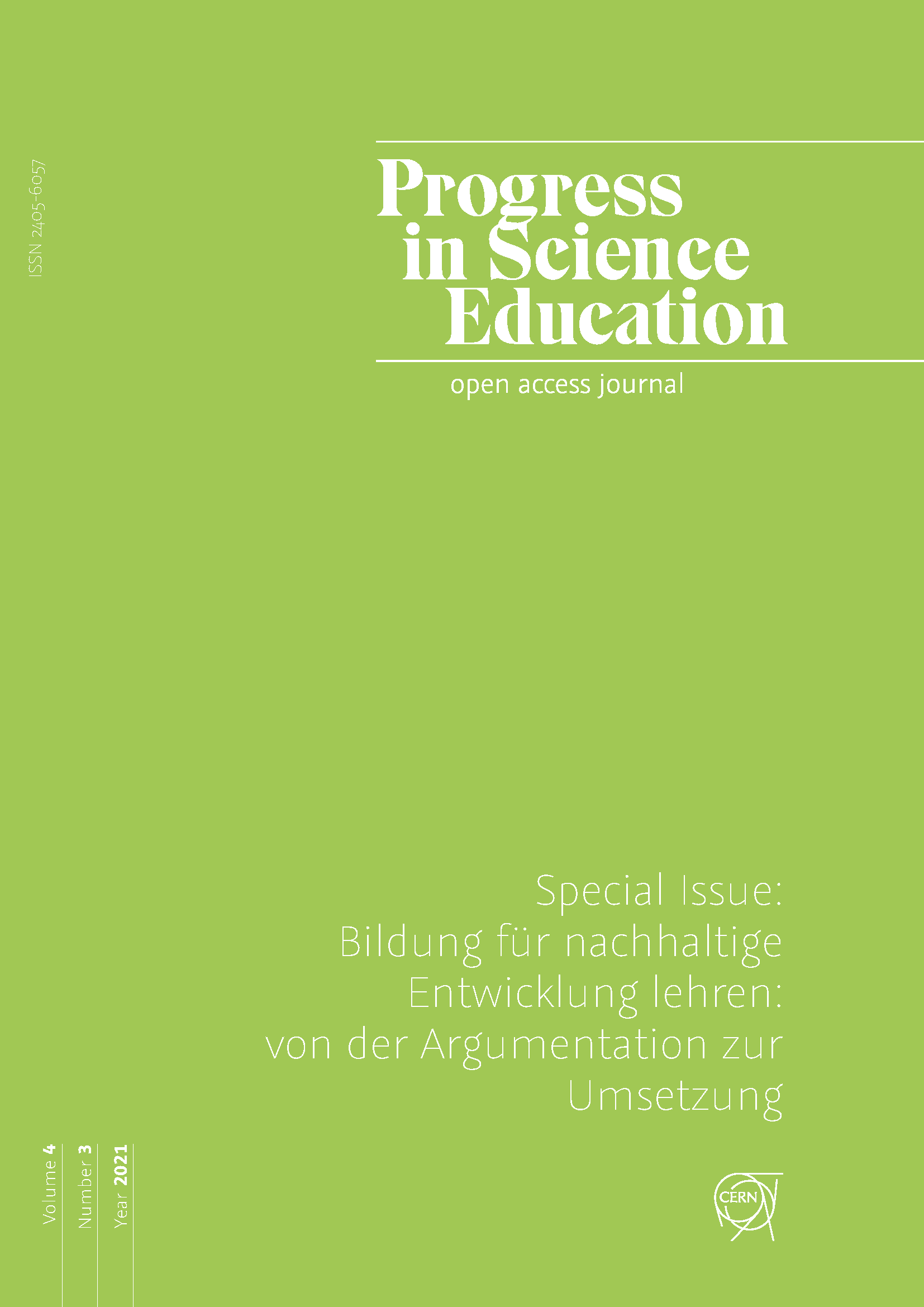Promouvoir le dialogue par la construction du désaccord
Intérêts et limites des jeux de discussion appliqués aux causes environnementales
DOI:
https://doi.org/10.25321/prise.2021.1295Abstract
Résumé: Dans un contexte de crises environnementales et sanitaires multiples, nécessitant des actions collectives radicales, et donc susceptibles de polariser, voire de fracturer la société, l’école s’interroge légitimement sur son périmètre et ses moyens d’action pour sensibiliser et outiller intellectuellement les futurs citoyens et futures citoyennes que sont les élèves, en vue de les inviter et de les préparer à agir. Une source d’inspiration possible réside dans les outils développés pour approfondir les relations science-technologie-société, notamment autour du traitement des «controverses sociotechniques» (les questions socialement vives suscitées par la science et la technologie). Parmi ces outils, les dispositifs dénommés «jeux de discussion» occupent une place particulièrement pertinente au regard de l’esprit de tolérance qu’ils insufflent dans les discussions contradictoires, à l’inverse des diverses formes de débats, potentiellement plus clivantes. Cet article vise à exposer les limites du débat comme outil de développement du dialogue autour des enjeux environnementaux et, à partir du concept de «construction du désaccord» emprunté à la médiation scientifique, à décrire la notion de «jeu de discussion», ses intérêts et ses limites. Il montre alors en quoi leur utilisation en classe est susceptible de répondre aux enjeux de sensibilisation et de mobilisation des élèves autour des causes environnementales.
Keywords: construction du désaccord, médiation scientifique, alternative au débat, jeux de discussion, école
Downloads
Published
Issue
Section
License
Copyright (c) 2021 The Author/s

This work is licensed under a Creative Commons Attribution-NonCommercial-ShareAlike 4.0 International License.
Authors who publish with this journal agree to the following terms:
- Authors retain copyright and grant the journal right of first publication with the work simultaneously licensed under a Creative Commons Attribution License that allows others to share the work with an acknowledgement of the work's authorship and initial publication in this journal. The applicable licence is https://creativecommons.org/licenses/by-nc-sa/4.0/, which means
You are free to:
Share — copy and redistribute the material in any medium or format
Adapt — remix, transform, and build upon the material under the following terms:
Attribution: You must give appropriate credit, provide a link to the license, and indicate if changes were made. You may do so in any reasonable manner, but not in any way that suggests the licensor endorses you or your use.
NonCommercial: You may not use the material for commercial purposes.
ShareAlike: If you remix, transform, or build upon the material, you must distribute your contributions under the same license as the original.
Authors are able to enter into separate, additional contractual arrangements for the non-exclusive distribution of the journal's published version of the work (e.g., post it to an institutional repository or publish it in a book), with an acknowledgement of its initial publication in this journal.
Authors are permitted and encouraged to post their work online (e.g., in institutional repositories or on their website) prior to and during the submission process, as it can lead to productive exchanges, as well as earlier and greater citation of published work (see The Effect of Open Access).

